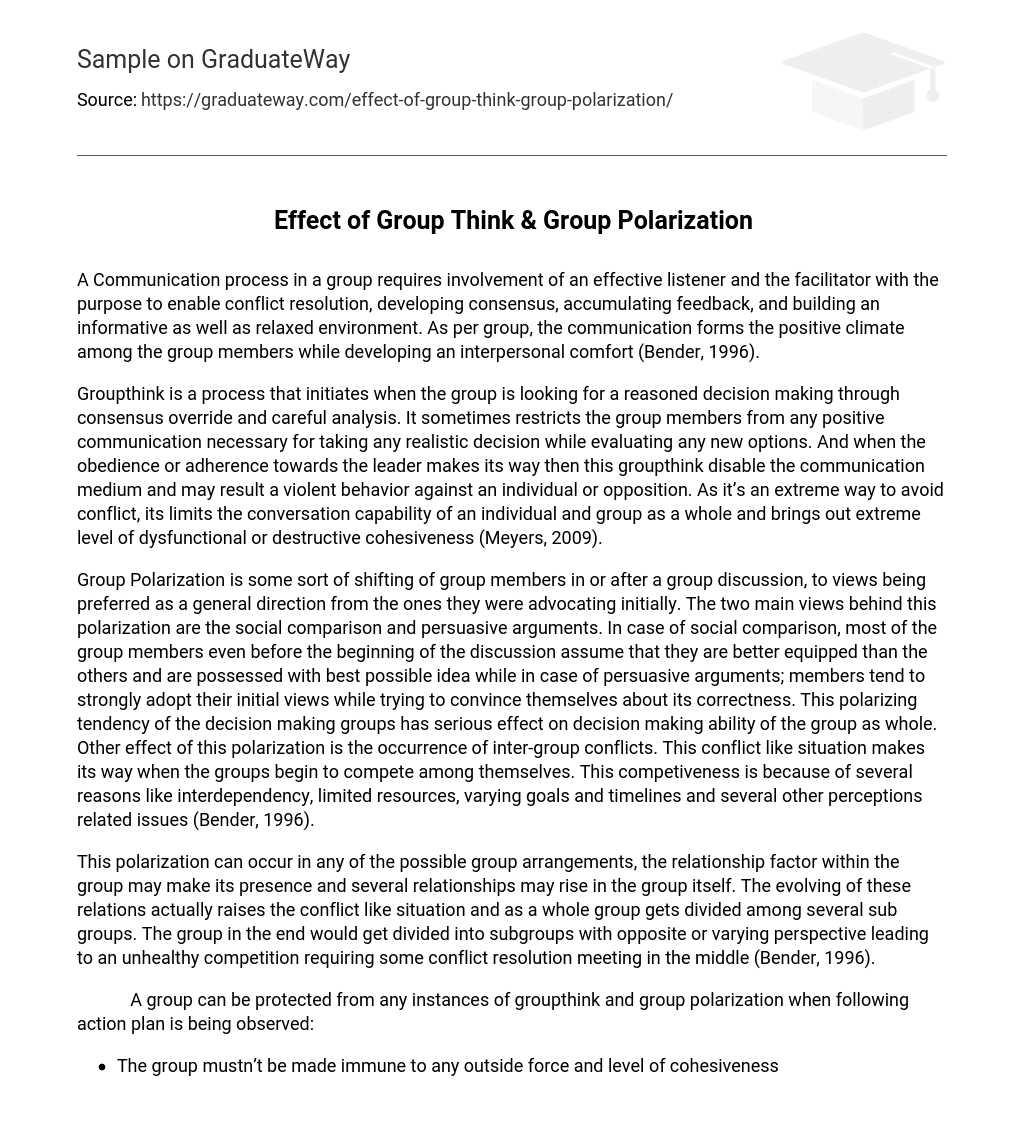Effective communication in a group requires the involvement of both an attentive listener and a facilitator. The purpose is to enable conflict resolution, develop consensus, accumulate feedback, and build an informative and relaxed environment. Communication within a group forms a positive climate among members while also developing interpersonal comfort (Bender, 1996).
Groupthink is a process that initiates when a group seeks to make reasoned decisions through consensus, override, and careful analysis. However, it can sometimes restrict group members from engaging in positive communication necessary for making realistic decisions while evaluating new options. When obedience or adherence to the leader becomes the norm, groupthink disables communication and may result in violent behavior towards individuals or opposition. While it is an extreme way to avoid conflict, it limits an individual’s and group’s conversation capabilities and brings out an extremely dysfunctional or destructive cohesiveness (Meyers, 2009).
Group Polarization is a phenomenon where group members shift their views towards the ones that are preferred as a general direction from the ones they initially advocated. The two main reasons behind this polarization are social comparison and persuasive arguments. In the case of social comparison, most group members assume that they are better equipped than others even before the discussion begins, while in persuasive arguments, members tend to strongly adopt their initial views while trying to convince themselves of its correctness.
This polarizing tendency has serious effects on the decision-making ability of the group as a whole. It can also lead to inter-group conflicts when groups begin competing with each other due to interdependency, limited resources, varying goals and timelines, and several other perception-related issues (Bender, 1996).
This polarization can occur in any possible group arrangement. The relationship factor within the group may cause its presence, and several relationships may arise within the group itself. The evolution of these relations actually creates conflict situations, and as a whole, the group gets divided into several subgroups. In the end, the group gets divided into subgroups with opposite or varying perspectives leading to unhealthy competition that requires conflict resolution meetings in the middle (Bender, 1996).
A group can avoid instances of groupthink and group polarization by following the following action plan:
- The group should not be made immune to any outside force and the level of cohesiveness should not reach an extreme level.
- The group should be led by an impartial leader.
- Inter-group or intra-group competition should be minimized by identifying and emphasizing common threats.
- The concept of cooperative rewards should be promoted by rewarding each cooperating team.
- The progress of the group should be periodically discussed with group representatives.
- Inter-group and intra-group communication should be encouraged.
References:
- Bender, S. L. (1996). Dynamics of Group Polarization. Available from: http://www.sharonbender.com/polarization.html.
- Meyers, D. (2009). The Power of Situation: Group Influence. Available from: http://webspace.ship.edu/jacamp/chapter_8a.pdf.





